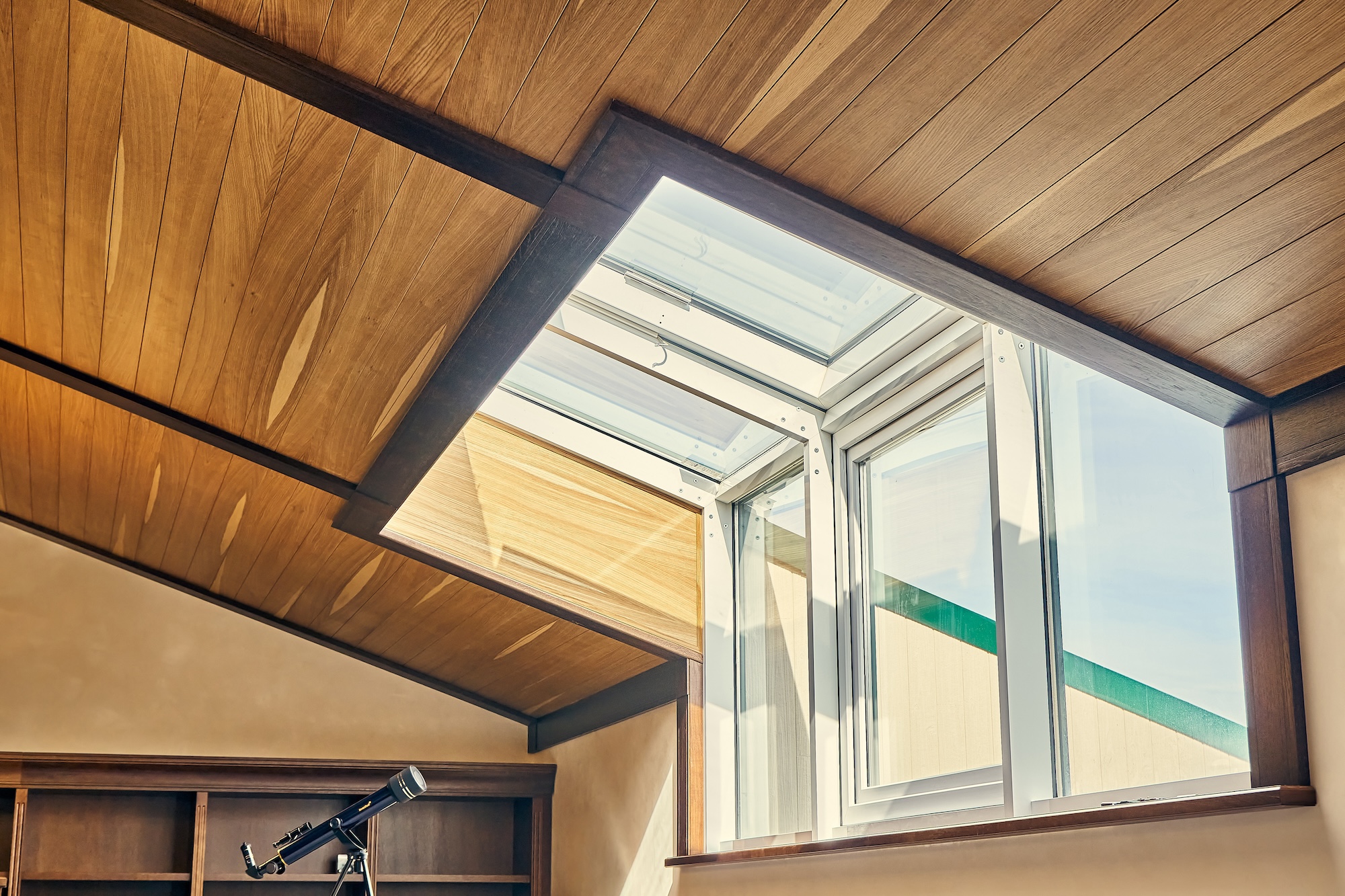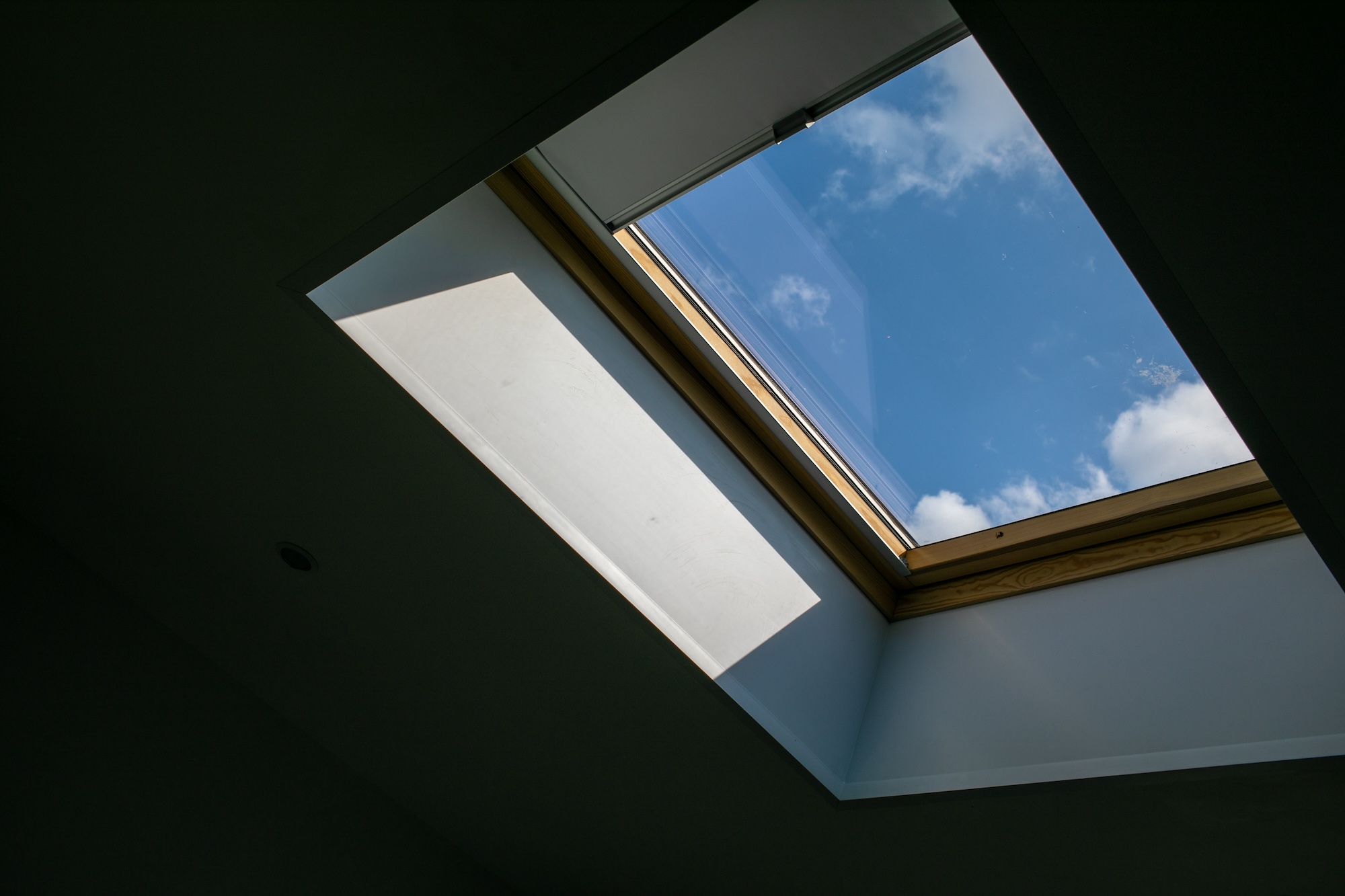Investors who decide to adapt their attic to create additional living space are generally looking for ways to make the most of the potential of natural lighting. Among the various solutions that can improve the quality of life in the attic, roof windows stand out first and foremost for their functionality and aesthetics. Above all, they provide access to an abundance of natural sunlight, making the space more pleasant and cosy. However, in order to enjoy optimum light, it is also crucial to have the right placement of roof windows or elbow windows, which can bring even more light into the space, and they are rarely mentioned.

When considering the location of windows, it is worth taking into account both the direction from which the sunlight falls and the interior configuration of the room. Windows placed on the south side will provide intense illumination for most of the day, while those oriented to the north may require additional support. Even better are the aforementioned slightly above-mentioned elbow windows, placed closer to floor level. They can provide even more light and add variety to the interior design. Unfortunately, it is not always possible to install them.
Therefore, in order to maximise the potential of roof windows, it is advisable to contact a specialist who will help you choose and position these elements appropriately. With a professional approach to lighting design, you can furthermore achieve a harmonious and efficient use of natural light, thus improving the comfort and functionality of your loft space.

How many roof windows should there be in the attic?
Probably not many people know, but roof windows can light up a space much better than traditional vertical windows. We are even talking about values as high as 20-25%. The angle of the window is of major importance here, as more light enters the room and is available for a longer period of time.
This is especially important for people who like natural light, value economy and want to have the best possible working conditions – in the event that a private office is set up there. To ensure that it is not too dark at the desk, it is therefore worth investing in more than one skylight. Implementing the majority of such windows not only provides better light in the room, but can also allow for interesting arrangement of the glazed space.
So how many windows should we install in the loft? It is assumed that for every 8 square metres of loft space, there should be 1 square metre of roof window. So with an attic of 100 metres, we should use windows with a total area of about 10 square metres.
What height should roof windows be at?
We already know how big the surface area of roof windows should be, but just as important as the surface area is the height at which they are located. This is particularly important for comfort and proper lighting of the space.
Although there is no set height at which roof windows should be placed, it is worth bearing in mind that the higher the window, the better the room is lit. On the other hand, such a window will be more difficult to keep clean. Therefore, it is necessary to balance these two aspects, so that both the window provides a lot of light, but at the same time is convenient to use, i.e. to clean, open and maintain.
Therefore, experts assume that the bottom edge of a roof window, depending on how it will open, should be at a height of 80 to even 150 cm. Of course, here we have to take into account such issues as child safety, frequency of window opening or the height of the household members. It is also a good idea to think about the placement of the windows in such a way that everyone in the loft has the opportunity to make visual contact with their surroundings.
Length of roof window equally important
Another important factor in effectively illuminating the loft and fully utilising the potential of the space is the appropriate length of the windows. Once the number and positioning of windows and the height of their installation has been determined, the builder must carefully consider which windows will be most appropriate for the project. The length of the window is then crucial to both the aesthetics and functionality of the space. It is worth paying attention to the angle of the roof pitch and the height of the roof in order to select the appropriate window sizes.
Typically, the steeper the roof pitch, the longer the windows should be, but it is also important to maintain proportion and harmony. The optimum position for the top edge of the window is usually between 2 and 2.2 metres above floor level. By adhering to these guidelines, we can ensure optimal lighting in the attic, which will contribute to creating a functional and pleasant space to use.

Kneystone windows – bring even more light into the attic
Kneystone windows for loft spaces are undoubtedly the ideal solution, especially if you want to let in even more natural light. After all, the attic is a space that, due to its construction, can be designed in many ways. The installation of bow windows, which combine the advantages of roof and roof windows, offers even more possibilities. Above all, they give us the feeling of more space, a panoramic view and a comfortable place to live!
They can be designed to be installed on a vertical wall in the loft (i.e. the knee wall), thus providing an additional extension to the roof window. In this way, they improve room illumination and increase the field of view. Importantly, they can also be combined with a roof window of any design.
What are the benefits of lap windows?
The choice of roof windows is a key consideration for both the energy efficiency of the building and the optimum illumination of the interior with natural light. As we already know, when planning the number and size of windows, it is important to consider the proportion of their surface area to the floor area of the room, which will ensure even lighting. Combining roof windows with bow windows is therefore an excellent way to provide even more light to the interior and create an impression of space. What other advantages do bow windows have?
- They provide the best light in the attic, thus generating savings.
- They make an attractive interior decoration and add value to the investment.
- They are ideal for homes that do not have a hood.
- They add a modern and stylish touch to the loft.
- They optically enlarge the space.
- They allow any person to glance through the window freely and comfortably, which is not obvious with roof windows.
What types of kneystone windows do we have?
Modern L-shaped elbow windows are not only highly resistant to external factors, protecting us from low temperatures and keeping out intruders, but they also guarantee complete comfort. Currently, we can distinguish the following types of elbow windows most frequently on sale:
- Lipped roof windows – these are the traditional and most common sloping, bow windows, which are a combination of a roof sash and a vertical sash.
- Composite kneel windows – these are fitted with an energy-efficient double-glazed package that is burglar-proof and resistant to various types of damage.
- Balcony Lap Windows – these can be permanently installed, being fix windows, or a vertical window opens onto a terrace/balcony.
- Double bow windows – these are so-called twin sets, i.e. two roof windows and a vertical window are placed next to each other. This provides better light to the interior and increases the field of view.
How do I install a lap window correctly?
How do I properly install a bow window? This is the question on the minds of many people who want to introduce this solution into their home. A key step is the careful preparation of the opening into which it will be inserted. The installation of this type of window requires the roof covering to be removed, and sometimes the roofing battens to be cut. It is important to maintain adequate spacing above the window, at the sides and between the roofing and the opening, leaving approx. 8-12 cm between the roofing and the opening and approx. 5 cm at the sides.
To start the installation, first fix the angles to the frame and then fix the mounting battens to the roof, making sure they are well level. Next, it is necessary to properly insulate the window. This is usually done using mineral wool, which is placed in the frame. The next step is to fix the frame and insert the window sash. In the case of a slope and vertical window, it is also important to connect them with a special flashing.




















